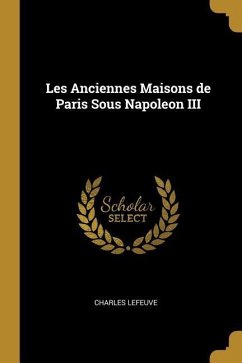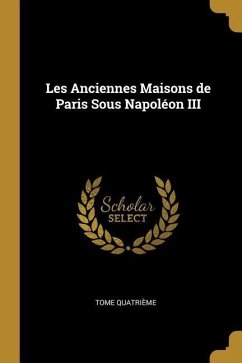Les Anciennes Maisons De Paris Sous Napoléon III: De La Rue Des Postes À L'impasse Des Peintres, by Charles Lefeuve, offers a fascinating glimpse into the historic houses of Paris during the reign of Napoleon III. This meticulously researched work explores the architectural and social fabric of the city, focusing on the area from Rue des Postes to Impasse des Peintres. Lefeuve's detailed descriptions provide a window into the lives of Parisians and the evolution of their urban environment in the mid-19th century. Readers interested in French history, architecture, and urban studies will find this book an invaluable resource. It captures a pivotal moment in Paris's transformation, preserving the memory of its old houses and the stories they hold. This work has been selected by scholars as being culturally important, and is part of the knowledge base of civilization as we know it. This work was reproduced from the original artifact, and remains as true to the original work as possible. Therefore, you will see the original copyright references, library stamps (as most of these works have been housed in our most important libraries around the world), and other notations in the work. This work is in the public domain in the United States of America, and possibly other nations. Within the United States, you may freely copy and distribute this work, as no entity (individual or corporate) has a copyright on the body of the work. As a reproduction of a historical artifact, this work may contain missing or blurred pages, poor pictures, errant marks, etc. Scholars believe, and we concur, that this work is important enough to be preserved, reproduced, and made generally available to the public. We appreciate your support of the preservation process, and thank you for being an important part of keeping this knowledge alive and relevant.
Bitte wählen Sie Ihr Anliegen aus.
Rechnungen
Retourenschein anfordern
Bestellstatus
Storno








